This is a 3 panel wide field mosaic of NGC6604, M16 and M17 in H-alpha, OIII and RGB. Also in the same field of view are M18 and IC4701, along with a view more open star clusters and nebulas. It was my main project on my astrotrip to Namibia this year and I spent the first 5 nights collecting the data for this. The end result is a highly detailed image of 20378 x 11160 pixels which contains a lot of very interesting objects and detailed features.
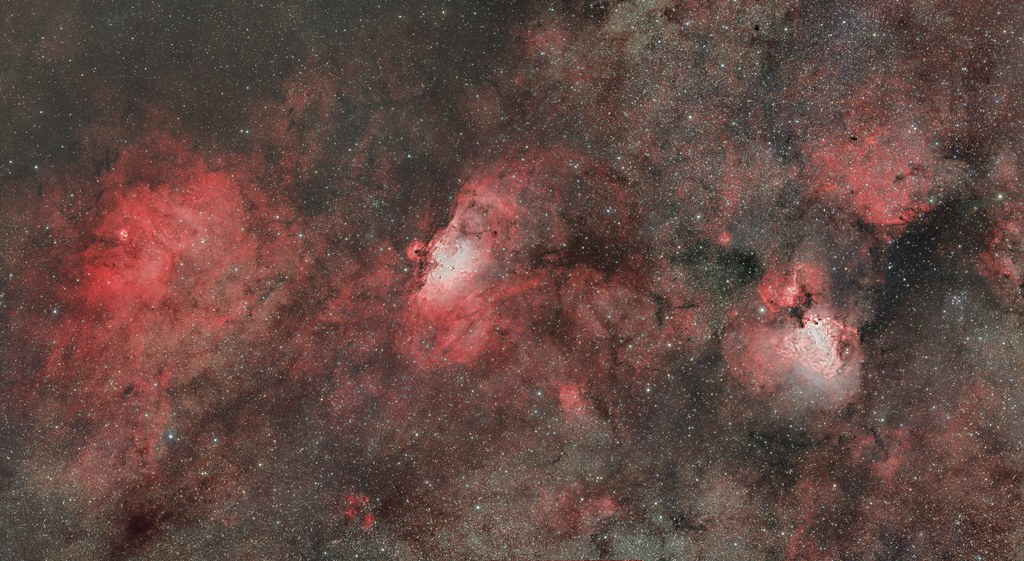
Click to view the full resolution version of the image
NGC6604 and Sh2-54
NGC 6604 is an open star cluster in the constellation Serpens. The associated nebula is a cloud of glowing hydrogen gas which known as SH2-54.
M16
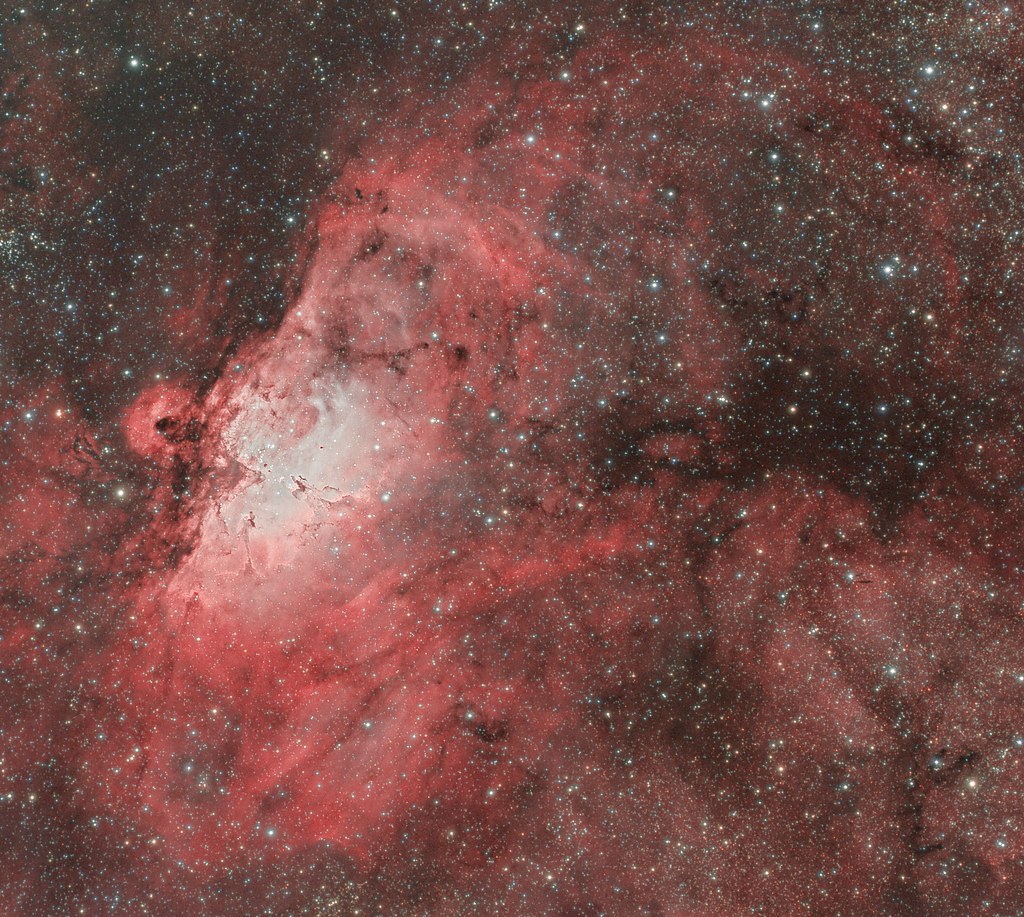
The Eagle Nebula, also known as the Star Queen Nebula, IC4703 and NGC6611 is a very famous emission nebula surrounding a young open star cluster. It became famous because of the iconic Hubble image of the so called ‘Pillars of Creation’ which is a region of gass where intense star formation is happening.
When you look in more detail into the center of the nebula, at the region around the Pilars of Creation you can discover more interesting features. Just at the base of the Pilars of Creation you can see Herbig-Haro object 216. (the more pinkish feature that is just beneath the 2nd pilar)
Within M16 you can also see some beautiful Bok Globules that really seem to be ‘floating’ there.
M17
The Omega Nebula or Swan Nebula is another famous HII region. This one lies in the constellation of Sagittarius at a distance of around 5,000 light-years from earth. M17 is actually considered to be one fo the brightest and most massive star-forming regions of our galaxy. Open star cluster NGC 6618 lies embedded in the nebulosity and is heating up the gases of the nebula.
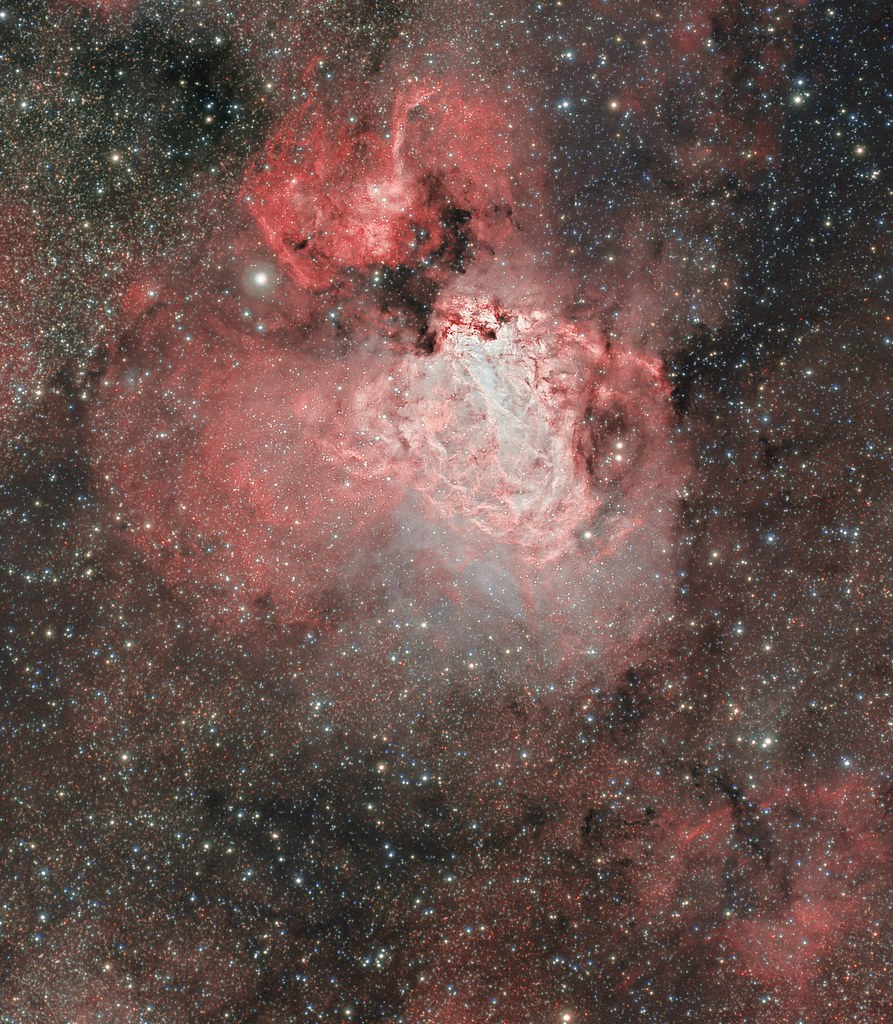
M17 shows some very interesting features in it’s nebulosity. There seems to be a ‘blow out’ to the left where you can see 3 shockwaves in the gass if you look careful. Furthermore the OIII part is extending quite far to the lower left. Further down in the lower left corner there are a few very thin OIII ‘whisps’ (which remind me of veil nebula). I found out that there seems to be a Supernova Remnant behind M17, so this could be filaments belonging to that structure. It is called G16.05-0.57.
The HII region next to that however, seems to also be associated with a SNR, G015.1-01.6 so this could also be from that source. At least it’s quite clear that it is a SNR.
IC4701
Above M17 and M18 you can see another emission nebula which is IC4701. This fov also contains some interesting (not so) dark nebulas.
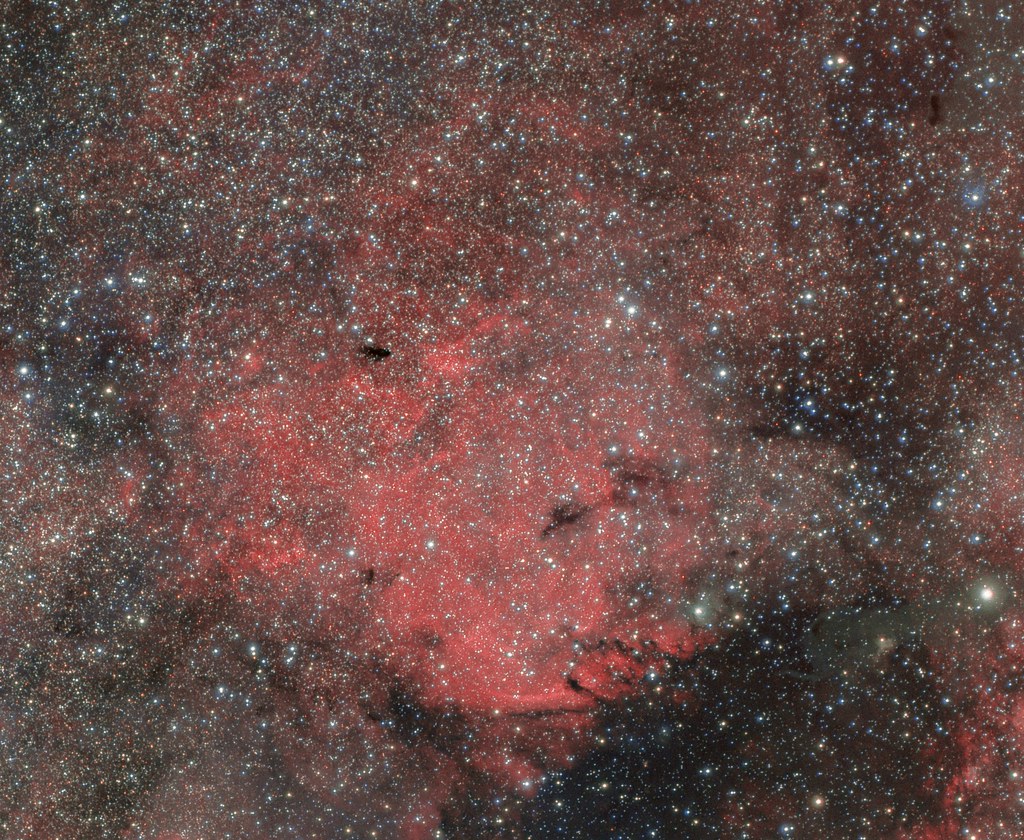
Throughout the whole field of view you can find more very interesting HII regions and dark clouds
Processing
I calibrated the RGB data in Astro Pixel Processor and NB data in PixInsight. Mosaic registration of all the panels for all channels was done using Astro Pixel Processor. I then took these results and processed them in PixInsight.
There I used a combination of PixelMath and LRGBCombination on the non-linear Ha and OIII frames to create a ‘natural’ bi-color for which I used a max(Ha, OIII) for the luminance. I then used a max from Ha, OIII and the CIE-L component of the real RGB image as Luminance for the SHO-AIP script. I used the real RGB, Ha, OIII and the resulting Luminance in this script to get a natural HaOIIIRGB image. As a final step I used a Luminance mask to combine the bi-color image with the HaOIIIRGB image.
In all this I did of course all kinds of processing to get the frames in the right state to use in the different channel combination methods.
One thing worth noting is that you should be very careful (or just avoid) using LinearFit to level images before combination. In this case this resulted in very unnatural cores every time I did so. Also, one can argue it doesn’t make sense in some cases to assume a same level of signal in different channels. Manual HistogramTransformation and other processes give you far greater control over the result in every step.
Acquisition details
Image taken with monochrome Nikon D600 on a APM107/700 with Riccardi reducer and modified Nikon D600 on a TS Quadruplet 480/80, mounted on Fornax 51 and guided with MGEN.
Panel I – NGC6604
Ha 29x12min ISO400
OIII 13x12min ISO400
RGB 27x12min ISO400
Panel II – M16
Ha 24x12min ISO400
OIII 16x12min ISO400
RGB 23x12min ISO400
Panel III – M17
Ha 25x12min ISO400
OIII 16x12min ISO400
RGB 35x12min ISO400
Location: Astrofarm Kiripotib, Namibia
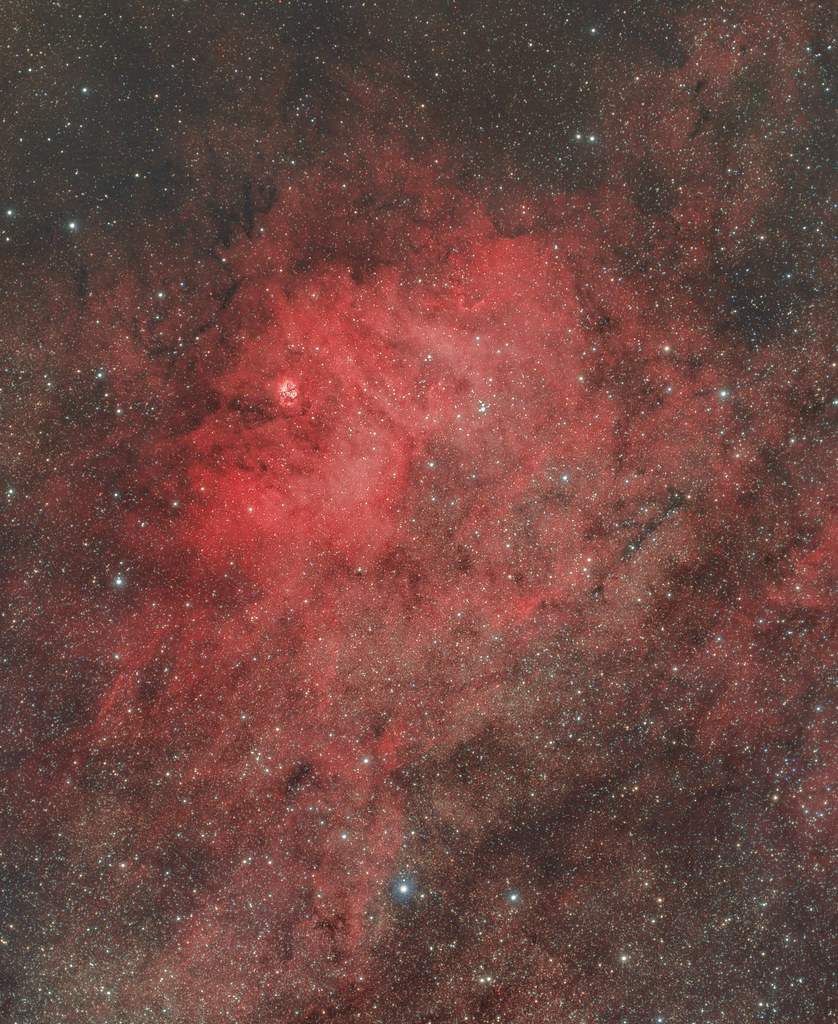

Congratulations Chris with Image of the week!
https://photographingspace.com/iotw-sep-25-2017/
Thx Kees!